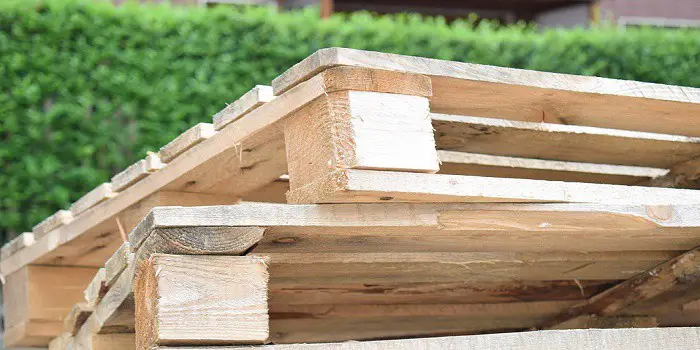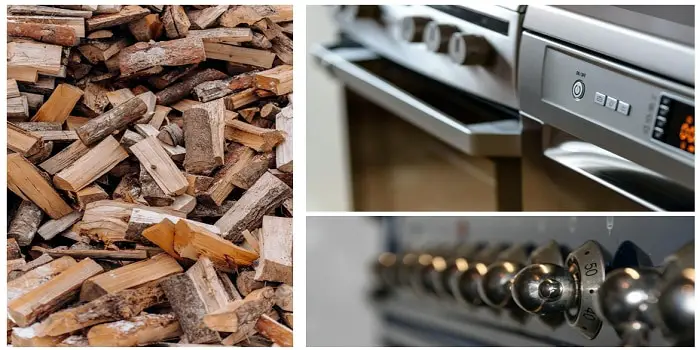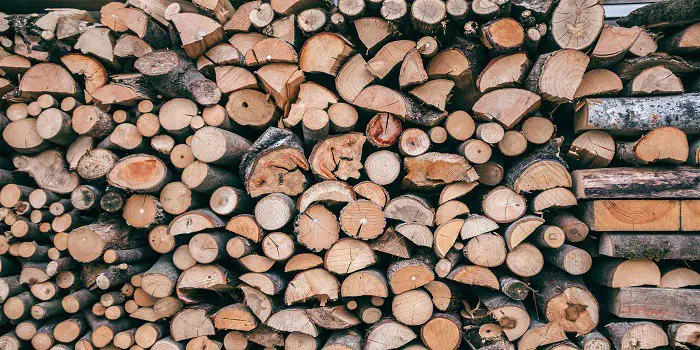
The traditional measurement of bulk firewood purchases is referred to as a cord.
To maximize the acquisitions ‘ value, firewood buyers make such purchases via full cords (or face cords).
In terms of measurements, a cord of firewood is eight feet long, four feet wide, and four feet high (128 cubic feet).
The actual wood typically constitutes about 85 cubic feet of that cord, with the air voids in between making up the rest.
The number of firewood pieces depends on the cut pieces’ width.
The width of the pieces is never overly wide because too big of a piece is not usable for home heating purposes, the primary necessity that drivers’ firewood purchases.
For this reason, the wood is cut into sizes that measure different, shorter widths.
The Cord of Wood Dimensions
In order to measure a cord of wood, it is pivotal to understand the definition of a cord.
What makes this a bit of a challenge is that various terms refer to cords.
To better understand these, let’s quickly review what you must understand about the various firewood measurement-related terms:
1- Full Cord
This refers to the cord of firewood logs that fills the space of 4 feet.
The dimensions of a full cord are 4 ft X 4 ft X 8ft (Width X Height X Length), and it includes 128 cubic feet filled with logs.
However, because the firewood pieces are not flush together, they end up filling up 85 cubic feet in a full cord, with the air in between them making up the rest of it.
2- Face Cord
This equates to a third of a firewood cord in measurement depth.
A face cord can be recognized as a wood stack that is 4 ft high X 8 ft wide X 16 inches deep.
Every piece of wood in the face cord is less than 4 feet in length, though their lengths are never precisely the same as there is no formal regulation set in place for those measurements to meet a particular standard.
A face cord is known by other names as well, including a run, a rick, a furnace, or a stove cord.
3- Thrown Cord
When the wood is not neatly stacked but instead thrown into a wagon or the back of a truck, its volume is referred to as a thrown cord.
Because the logs are not neatly arranged, they occupy about 180 square feet in the back of a truck; though neatly stacked, they would still occupy roughly 128 square feet.
An average pickup truck has a 6-foot bed, equating to 54 cubic feet of firewood (if it was stacked on the bed). Trucks with an 8ft bed can contain 81 cubic feet.
Unstacked, or thrown, the cord in a 6 ft bed has about 30% of thrown cord, while the 8-foot bed has a 45% volume of a thrown cord.
If every piece of wood is 2 feet long, a thrown cord typically occupies 195 squares of space.
4- Green Cord
Before most piles of wood are stacked, they are cured and dried, a process that causes them to shrink by an average of 6 to 8%.
If this process has not been completed for the aptly named “green” cord you are considering, make sure you know to negotiate your price by applying the amount of wood you are losing out on from the cord.
The green cord could take up to 180 cubic feet when considering that every piece of wood is single digits a percentage larger than its counterparts because the moisture removes some of its volume when it evaporates.
This also makes the wood weight significantly less.
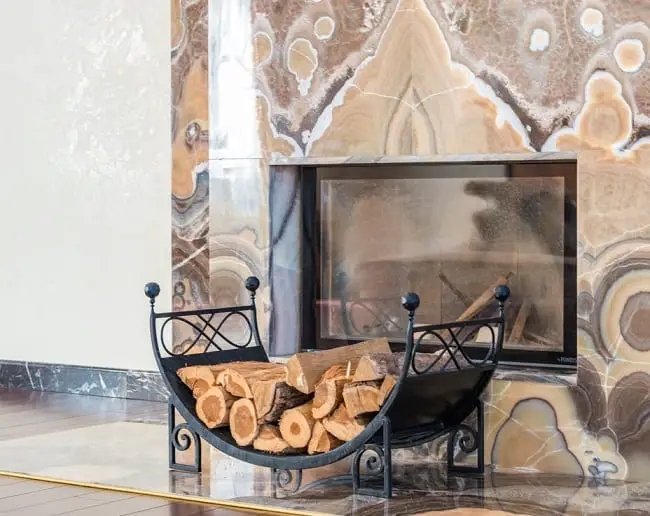
What’s The Average Cost of a Cord of Wood?
While prices of firewood cords vary depending on where they are purchased around the country, the expected range is from $120 to $180 for a cord of split and seasoned hardwood.
The costs are also seasonably variable, meaning they cost more in the winter.
Purchasing a firewood winter cord could range between $220 to as much as $400 per cord.
To find the best prices, it’s essential to scour one’s local area to make sure you are getting the best bang for your buck.
Most companies will charge you extra for a stacking fee if your wood is being delivered in a truck and not in a pre-stacked cord.
Sometimes buyers will incur such a fee to have the wood stacked first and then delivered.
Some suppliers also offer services like cutting the wood into finer parts, shorter lengths, uniforming every piece’s size, and cleaning the wood.
All of these add to the charges applied to the buyers.
How much does a full cord of wood cost?
Remember that a “full cord” is a standard unit of firewood measurement.
However, since not everyone needs that much firewood for their purchase, portions of cords are also popular purchase quantities.
For instance, a third of a cord will commonly contain pieces of firewood 16 inches in width, and their volume constitutes just a third of what typically measures as a full cord.
Firewood buyers are trying to get the most firewood for their money. It is a substantial financial investment, so the price should yield optimal value.
Some choose to purchase by truckloads or station wagon loads, but these are not charged for in the same manner.
Whereas a cord (or one of its partitions) is typically stacked, trucks are loaded by the cut wood being tossed onto them.
This means that per cubic foot, there is far less firewood included.
Some dealers do not sell full cords but only portions.
If you are looking for a cord of firewood, you may need to bring a tape measure to accurately assess how much constitutes the combined dimensions of a cord.
Dealer prices also vary, so to get the best final price, it’s always good to do the math of sold portions between various dealers.
The quick method to calculate the math is simple.
For instance, if a dealer sells face cords of firewood for $75, and the stack is eight feet long, 4 feet tall, and has pieces that are 16 inches wide, all you need to do is divide the cord’s length (48 inches) into 16 (width of every piece in inches), giving you 3.
Then multiply by the face cord price of $75, which calculates to a cost of $225 per full cord.

When is the Best Time to Buy or Order Your Wood?
It often happens when consumers need the dry wood the most – suppliers may be out of it.
Because wood takes time to dry, the stocked dry inventory might be sold out.
There is more handling in the process, storage costs, and suppliers’ money.
And when the firewood dries, the space it would have otherwise occupied in the cord will need to be filled with additional firewood pieces to fill out the rest of the thrown cord.
Therefore, the best rule of thumb is always to order your wood a year ahead of when you require it.
For the best money, you can purchase green cords annually, then stack them neatly, covering them to guard against the effects of the elements, mainly snow and rain.
This will help the firewood dry and get you the wood for burning you need come the next subsequent year.
At that point, you should be placing an order for firewood for the next season.
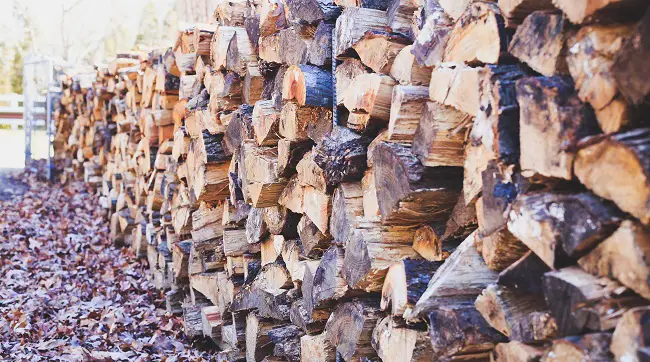
Tips for Getting the Best Deal On Firewood When Buying
Purchasing firewood can be confusing, and if you do not know what you are doing, you can get far less firewood than you would if the purchase was made in a cord.
Stacking up for the wintertime already runs hundreds of dollars in firewood costs, so it’s best to get the most for the money spent.
Here are a few helpful tips to get the most for your money when buying firewood:
a) Visit and verify
While calling a firewood supplier and making arrangements is a simple method, it is not recommended.
It’s always good to visit the lumber yard to verify what you will pay for with your own eyes.
When purchasing firewood, purchase it in the standard and verifiable full cords.
If you purchase by truckload or station wagon load, you will likely pay more for less firewood.
b) Buy large pieces
Pieces of firewood cut on the shorter side took more time to get to that size.
That time equates to labor, and labor equates to higher prices. The smaller the individual wood logs are, the higher the price will likely be.
c) Check the size before buying
Evaluate your fireplace size to know the width and length of the logs that will fit into it conveniently.
It would pretty terrible to invest hundreds into purchasing a cord only to find out the logs are too long to fit neatly (typically, you want 2 to 4 inches of clearance on the side when inserting a log into a fireplace).
For lengths, depending on the size of your fireplace, you will typically go with 16”, 20”, or 24” long firewood pieces.
d) If possible, buy green, uneven, and uncleaned
Dried wood has been in storage longer, so suppliers had to occupy more space with the product, possibly preventing them from restocking sooner.
This means that the wood is worth more to them, so they will likely increase the price of dried wood.
Moreover, cleaning wood can be challenging, but the result is nice-smelling firewood when burned.
The process of cleaning the wood will cost more, and that will be reflected in the prices as well.
If the cord contains pieces cut into very even partitions, more time was spent on assuring that their dimensions are consistent across the cord.
Time is money, so that time will almost surely increase the price.
FAQs
What is a “Rick” of Wood?
Simply put, a firewood stack four feet tall and eight feet in length is referred to as a “rick.”
The stack width varies based on the supplier, the market in which they are offered, or regional norms.
Typically, the individual firewood pieces in the rick measure in either 12-inch, 16-inch, or 24-inch variations, with the 16-inch type being the most common.
A familiar term in the firewood sphere for a rick is a face cord of wood.
How Much Does a Rick Weigh?
There is no one definitive weight as all rick of wood you will find are different.
Their weight will generally depend on the size of the rick purchased (a full cord, half cord, quarter cord, etc.) and the natural weight of the particular wood being sold.
For instance, a single white or red oak cord can weigh as much as 5.5K lbs (or 2.5 tons), while lighter wood variants like spruces can weigh in at 2.5K lbs (or 1.25 tons).
The rick sizes are a pivotal factor in the weight, ranging from 625 lbs on the lighter end up to an average of 3K lbs on the higher.
How Many Pieces of Wood are in a Rick?
Typically, a single full cord of wood includes between 550 to 650 seasoned wood pieces that necessitate splitting.
A rick will include, on average, between 275 and 325 wood pieces.
As a consumer, one needs to understand how many pieces they require and how much the regional providers will supply with their delivery.
That way, the customer can adequately prepare in terms of budgeting to receive the specifically needed amount of wood on a rick.
A cord of firewood is a unit of measurement with which firewood is sold, though it can be sold in partitions of firewood (like a half or a third).
To get the best deal on firewood, it is essential to be proactive and physically visit lumber yards to research the product you will be purchasing.
To get the best price for your money, you will need to measure the cords at various lumber yards and compare the prices to get the best possible deal on firewood.

Hi, I am Mark Garner a professional carpenter, woodworker, and DIY painter. I live in the small city of Peoria, Arizona as a semi-retired woodworker. I have started this blog with a simple motive to help you with my wood experience in this sector. If you like to know more about what I love doing and how it all got started, you can check more about me here.

